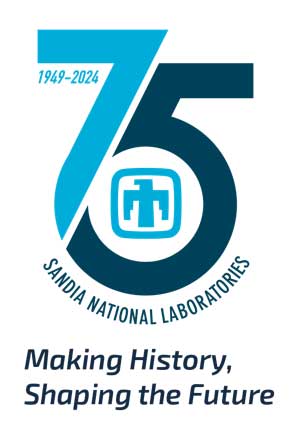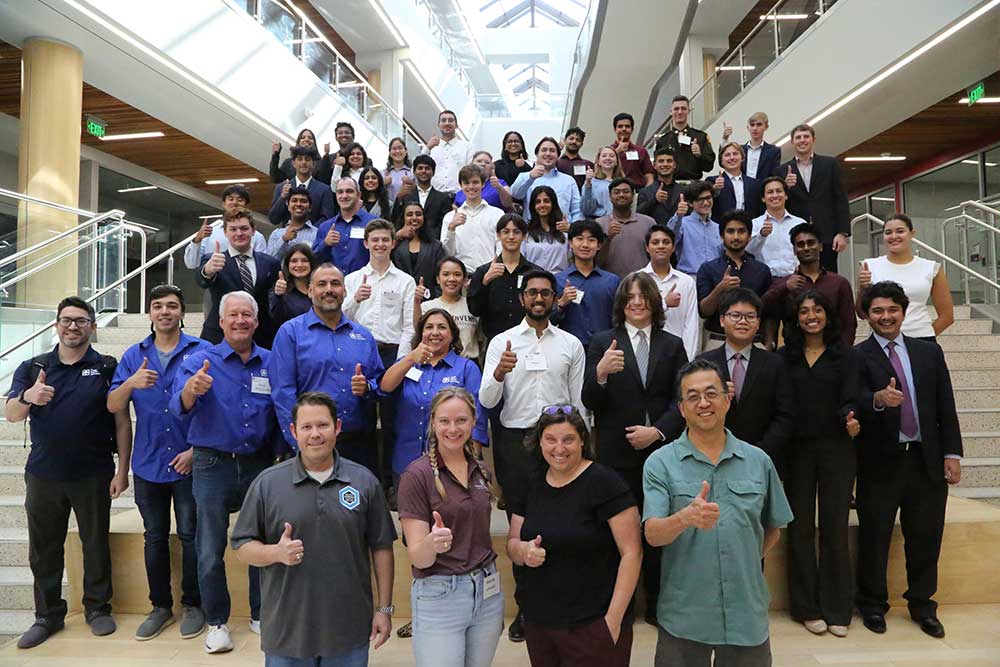
The Labs has made many prescient investments in its 75-year history, but few have provided more access to recruitment, research partners and new capabilities than the Sandia University Partnership Network.
Through this network, which was formally organized in 2015, Sandia employees designated as campus executives foster and maintain relationships with colleges and universities in 17 states — some of them the world’s most prestigious educational institutions.
Sandia’s researchers can not only leverage those connections to attract new staff but also draw upon scientific fields of study that can benefit the Labs’ national security priorities.
Programs like hypersonics and the CHIPS and Science Act have benefited enormously from the academic alliances that Sandia maintains.
Nuts, bolts and CHIPS

“The program has been so very impactful,” microsystems engineer Rick McCormick said of how the partnership network has affected Sandia’s leadership in the execution of the CHIPS and Science Act. “I really couldn’t be supporting the engagement that we have so far without our campus program managers.”
Congress passed the act just over two years ago, with money divided between the departments of state, defense and commerce to create technological hubs around the nation. More than $30 billion was committed to the Department of Commerce, which is funding projects to encourage industrial development across 15 states.
“Sandia, which has the government’s largest and deepest semiconductor capability, is pretty popular as a partner,” Rick said. “We have a lot of expertise and a lot of credibility because we not only do research, but we do prototyping, as well as technology maturation and production. All of which we do pretty well.”
Sandia is a lead partner for one of the DOD Microelectronics Commons hubs working on spurring new investment and jobs in microelectronics, which is being led by Arizona State University — a preexisting member of the Labs university network.
“There’s at least one main university and several other universities in each of these hubs, and we already have projects with many of the universities involved in CHIPS opportunities,” Rick said.
ASU is not the only university in Sandia’s network leading CHIPS activities. Purdue, Georgia Tech and University of Texas at Austin are all engaged to grow America’s semiconductor capability, and all are key partners for the Labs.
“Academic Programs looks for partnership opportunities that compliment Sandia’s capabilities that can lead to greater achievements,” Academic Programs senior manager Jim Redmond said. “By partnering with universities, we aim to secure CHIPS Act funding for projects that we can’t tackle alone.”
Most relationships are cultivated and maintained by experienced on-site campus partnership managers who connect the Labs with colleges from around the nation.
“I really rely on our campus partnership managers. The leads in a number of the organizations that are going after these different funding opportunities are part of our Academic Programs network,” Rick said. “It’s all these universities that we’re partnered with so its incredibly handy to be able to pick up the phone and call somebody who lives on those campuses.”
High-speed support
While not a lot can be said about Sandia’s work in creating hypersonic weapons, program Senior Manager Alex Roesler has quite a lot to say about how the partnership network has directly impacted the Labs’ work.
Sandia’s work to revolutionize the weapons systems in the nation’s stockpile has spanned each of its 75 years, including cutting-edge new designs for hypersonic platforms that travel at more than Mach 5, or 3,836 mph. The Common Hypersonic Glide Body, which was used on multiple weapons programs, was designed and built at Sandia. The Labs has partnered with industry to accelerate the manufacturing of glide bodies for future deployment.
In recent years, the nation’s military has fast-tracked the timelines to create operational hypersonic platforms, and Sandia has answered the call. That timeline for development created a need for partners that Alex said the academic alliances helped meet.
“There was certainly a challenge as far as how to build the bridge,” he said of the effort it took to leverage academic capabilities in a highly sensitive area. “It takes a lot of work, a lot of networking, to make the relationship between those faculty and the staff at Sandia successful.”
Though the universities could not work on classified elements of the projects, the work they continue to do is indispensable.
“Basic research and development are the foundation of all our key technologies and provide great opportunities for collaboration,” Jim said. “However, we are seeing more universities reaching out to the national security sector and expanding their capabilities to handle sensitive work, including classified labs and computing facilities, as well as involving cleared professors and students in these projects.”
Alex called the relationship-building rewarding.
“The campus managers absolutely helped identify potential research collaborators at the university and made all the introductions,” he said. “So, with regard to building that external network of university collaborators, they were absolutely instrumental.”
Campus connectors
In various forms, Sandia has spent decades matching institutes of higher education with the dedicated people who lead Sandia’s missions and innovate advances that the nation relies upon. Jim said the team follows a highly structured process in relationship-building.

“Using a data-based approach that emphasizes our strong research reputation, diverse talent, national presence and partnership approach, we have formed partnerships with 27 universities that strengthen our identity as a national lab,” he said. “Each university has a designated campus executive who works with their teams to identify and support impactful research collaborations. We also track partnership metrics to ensure a good return on investment and adjust our network as needed.”
The regular presence of campus executives at these universities pays dividends that have benefited both academia and the Labs, which enjoys a pipeline to recruit new employees who are already familiar with Sandia.
“At the schools in our network, dedicated on-site campus partnership managers play a crucial role by increasing visibility, supporting student events and collaborating with departments and professors,” Jim said. “These roles have proven invaluable to staff and program managers in expanding our capabilities and accelerating innovation. Those that engage with them value these connections, and campus executives appreciate the networking opportunities.”
Rick confirms that these opportunities are plentiful and beneficial.
“North Carolina State is calling us saying, ‘Hey, can we collaborate on power electronics?’” he said. “The AI hardware hub wants to take advantage of our neuromorphic accelerators, and it’s because we have all these relationships. If Stanford wants to collaborate with us, the campus manager is talking to them every week.”
Visit the Sandia University Partnerships Network for more information about relationships between Sandia and the nation’s education institutions.